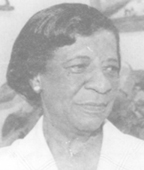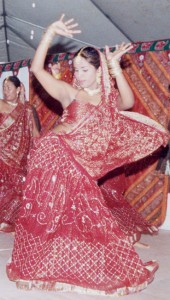 By Barrington Braithwaite
By Barrington Braithwaite
To fully give an informative and honest description of the position of any discipline, requires a case study plus the variables and conditions that influence positively or negatively the results of the particular study in question. I’ll take you through the influences and restless social comets that impacted on the rise and fall of “The Association of Creative Artists”.
This was a group that was comprised of professional Artists, creative citizens who lived through their works in the different fields of the visual Arts at home and abroad, -to name a few Angold Thompson, Peter ‘Ita’ Chester, Merlene Ellis, Mervyn Wilson, Quintyn, Kenton Wyatt, Owen John, myself, Seunarine Munisar, Omawale ‘Yank.’ and the late Basil Thompson and Omawale Lumumba. The group emerged at a period of resurgence from the early 70’s, a new phase of heightened cultural activities in all ex-pressions of the Arts between the years 1987 to about 1996.
 In the theatre; the multi-talented Harold Bascom had unleashed a fresh breathe of popular drama that captured the atmosphere of ‘the day’ Bascom’s ‘Barrel’ drew a new type of theatre audience, a grass root interest was ignited and local plays and international plays kept the cultural centre ‘Cultural’ and interesting through the works of play writes like Paloma Mohammed, Grace Chapman, the late Lloyd Grannum, Michael Duff and others, who brought out a new generation of actors. There was also competitiveness between artists in the Theatre support areas who were doing Billboards and set designs and a healthy arts atmosphere was proliferating, inspiring, commanding a demand for higher standards with discussions on concepts and ideas.
In the theatre; the multi-talented Harold Bascom had unleashed a fresh breathe of popular drama that captured the atmosphere of ‘the day’ Bascom’s ‘Barrel’ drew a new type of theatre audience, a grass root interest was ignited and local plays and international plays kept the cultural centre ‘Cultural’ and interesting through the works of play writes like Paloma Mohammed, Grace Chapman, the late Lloyd Grannum, Michael Duff and others, who brought out a new generation of actors. There was also competitiveness between artists in the Theatre support areas who were doing Billboards and set designs and a healthy arts atmosphere was proliferating, inspiring, commanding a demand for higher standards with discussions on concepts and ideas.
The late 80’s saw the emergence of the Art Galleries, gathering their audiences and exhibiting eager competing artists, even Caribbean Artists were finding it attractive to exhibit in Guyana. The galleries had evolved around {at times} rival groups of artists, Ras Camo had led the way with the Roots & Culture Art Gallery , Nigel Hughes a young lawyer took the Hadfield Foundation Gallery to another level offering framing services with an art supply shop, many artists felt comfortable developing their skills because the market was booming, the late Richard Humphrey of Tower Hotel brought in canvases, art supplies and also offered framing services, Arlington Apartments not far from the Hadfield Foundation launched the Arlington Gallery. In that period the Chronicle newspapers encouraged local cartoonists and illustrators to bring their work in, this was a post independence policy that saw the emergence of many talents, leading in the early years were Rudy Seymour, who wrote and also illustrated scripts by Allan Fenty. Holly Harris was a leading cartoonist of the post independence era, others over a period between the mid seventies were A De Lima, Tyrone Doris etc, I emerged in the early eighties and was encouraged to explore my talents because the opportunities were open, you just had to be ready, because there was an art camaraderie who were pitiless on those who fell short, the Harris boys [sons of Holly Harris] came in the late 80s. this period does need more research with a specific focus on cartoonists and illustrators.
The Burrowes School of Art , founded by the late Artist and Archeologist Dr Denis Williams has played a profound role in shaping the visual Arts in the post- Independence years up to the late 90’s, this institution has honed and groomed incredible talents for this Nation, in the early 80s people were coming back from Cuba with new ideas, for those of us who were illustrators and graphic artists the revolution on the American scene with the rise of Harris B&W Horror/ Sci- Fi and Sword & Sorcery magazines did not escape us, the techniques challenged us , the funny thing is we didn’t imitate their fantasy and historic worlds, we delved deep into our own awakening, realizing that we had a tremendous amount of untold stories , one must remember that we were the post Independence ‘Lil ABC’ Pickney who listened on the radio as young people to James Sydney narrate Mittelholzer’s My Bones and my Flute, and Francis Quamina’s ‘Tides of Susenberg’ and other quality local stuff. So in the 70’s/80’s we were also swept away listening to Bob Marley’s music and grappling with the idea of being emancipated from mental slavery while trying to understand what was happening at home with our turbulent politics that told us about a socialism we couldn’t fathom with all it’s ridiculous mood changes that incorporated a condemnation of every thing that was outside of the socialist ‘message’.
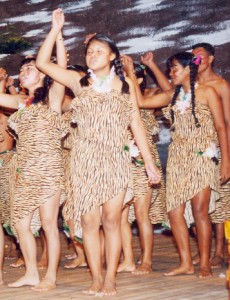 The persons that held the official offices that interacted with artists and artistes were not politicians but were themselves Masters in their specific artistic disciplines, their was a Department of Culture headed by Lynette Dolphin who cultivated and took the National School of Dance to tremendous levels equaling the Jamaica School of Dance, reputed as the best in the English-speaking Caribbean. Denis Williams was the Director of art, he was an internationally accomplished artist, novelist and archaeologist who also founded the Walter Roth Museum of Archaeology and Anthropology, Billy Pilgrim was the Director of music, Francis Quamina was the Director of Drama, Politics played second fiddle to these artists and Forbes Burnham left them alone, the arts had strong personalities that contributed significantly to the period of decolonization. Out of this a generation emerged with ideas of self that manifested in Art, Music, Drama, Dance and our Literature this was the process of evolution in a nutshell that produced the artists that constituted The Creative Arts Association, we stood in another era, Desmond Hoyte had made the ideological change from Socialism, Bookstores, TV stations, Stabroek News were all generating a new feeling into Guyana. Computers descended on us like a blitz, and we were set to go.
The persons that held the official offices that interacted with artists and artistes were not politicians but were themselves Masters in their specific artistic disciplines, their was a Department of Culture headed by Lynette Dolphin who cultivated and took the National School of Dance to tremendous levels equaling the Jamaica School of Dance, reputed as the best in the English-speaking Caribbean. Denis Williams was the Director of art, he was an internationally accomplished artist, novelist and archaeologist who also founded the Walter Roth Museum of Archaeology and Anthropology, Billy Pilgrim was the Director of music, Francis Quamina was the Director of Drama, Politics played second fiddle to these artists and Forbes Burnham left them alone, the arts had strong personalities that contributed significantly to the period of decolonization. Out of this a generation emerged with ideas of self that manifested in Art, Music, Drama, Dance and our Literature this was the process of evolution in a nutshell that produced the artists that constituted The Creative Arts Association, we stood in another era, Desmond Hoyte had made the ideological change from Socialism, Bookstores, TV stations, Stabroek News were all generating a new feeling into Guyana. Computers descended on us like a blitz, and we were set to go.
Of the many reasons that spiked the coming together of The Creative Arts Association was the need to spread the financial impact the Gallery commission would have on a one man show, secondly we needed to tour, and sensing the diversity of our talents as we were painters, sculptors, illustrators, self publishers, craftsmen, dub poets and musicians, we calculated that we could hold an audience, particularly anywhere in the English-speaking world. In early 1992 we penned a letter to then Director of art Dr Dennis Williams asking to be allowed to develop the former Residence of the late President Forbes Burnham into an Art and small theatre centre. It was agreed that I should meet with Dr Williams at his home to discuss our ideas, he liked the idea and assured me that he had no problems with it however he indicated to me that the department of Culture would have to have a supervisory role as this was state property and it was unlikely to be handed over to a group of ‘Dreamers’, we had no problem with that. As with bureaucracies nothing happens quickly enough and the months went by, from August 92, I was busy transferring the ‘Shadow of the Jaguar’ from a graphic magazine into a play, other artists in the group were producing work for a launching exhibition at the Residence, which was agreed by the Direc-tor of Art that we could do, it was an exciting time, we paid scant notice to the coming elections, unaware that it would change our lives forever.
The Shadow of the Jaguar was staged on the 2 Oct 1992 , and so was the elections that brought the P P Pc into power . The following month The Creative Arts Association held its launching exhibition at the Residence, Omawale ‘Yank’ invited Mrs Janet Jagan, Yank was part of the black revolutionary movement back in the States and he seemed to think that Mrs Jagan was a fellow traveler on the Revolutionary road, I told him I grew up in Guyana with different impressions of Mrs Jagan. Some years earlier I had met Dr Jagan without knowing who he was, this was in the late 80’s at the then NBIC Bank, the bank had hosted an innovative art competition throwing out a gauntlet to artists to interpret the legendary city of El Dorado, I was busy with the second issue of the ‘Jaguar’ so I did not in the competition, nevertheless I participated with the exchange of ideas with competing artists especially my friend the late Omawale, I however attended the exhibition of the competing paintings and it was there I engaged in an exchange of views on the exhibits with a senior gentleman, his remarks aroused a short debate; he gesticulated and informed me that “This is all fantasy and..” I interrupted inquiring on whether the most famous world Art should be discredited because they are based on religion and mythology? we were distracted when Mr Hamilton Green approached the gentleman we shook hands and exchanged names and then I knew that I was talking to Cheddi Jagan. His prompt and narrow interpretation and conclusion on this exciting exhibition painted a grave view of this man’s view of the spirituality that envelopes the Arts, inspiring the unorthodox ideas and ideals that enriches society through the Arts.
I conveyed this experience to my colleagues. It was concluded that the decent thing to do was to extend the invitation to both Mr & Mrs Jagan, Mrs Jagan attended and was welcomed and celebrated and no doubt was inspired.
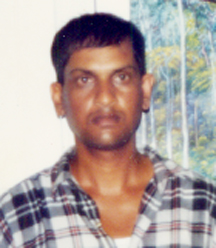 It would be the first and last exhibition in the mood and with the expectations we had, concerning our ambitions for the residence. We were not officially told when the Residence was reversed to its 19th Century owners name as the ‘Castellani’ House, we observed from a restricted distance as our suggested ideas were redefined and presented to the Nation, not one member of our group was consulted, informed or at any stage involved in what followed, we did hold what was to be our final group exhibition in August 1997 at the now National Art Gallery Castellani House.
It would be the first and last exhibition in the mood and with the expectations we had, concerning our ambitions for the residence. We were not officially told when the Residence was reversed to its 19th Century owners name as the ‘Castellani’ House, we observed from a restricted distance as our suggested ideas were redefined and presented to the Nation, not one member of our group was consulted, informed or at any stage involved in what followed, we did hold what was to be our final group exhibition in August 1997 at the now National Art Gallery Castellani House.
By 1998/9 most of the institutions that engaged the Arts were under the control of people who were not involved in the Arts. Theatre declined, galleries faded away, artists were migrating, most of the members of the Creative Arts Association had migrated by 1999. The painful thing was, that in the celebration of the tenth anniversary of Castellani House a booklet was published that omitted the existence of the early efforts & ambitions of the Creative Arts Associa-tion, I did complain but was told by the curator Elfrida Bissember who I respect in the Arts and who I think is about the most competent person to fill that position; that she did not know of the circumstances beyond her relationship at Castellani.
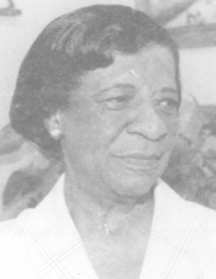 The most tragic error of this administration was the housing of the departments of Sports and Culture in the same Ministry, it illustrates the complete obliviousness to understand either discipline, and what is necessary in real expertise to effect the development of either Sports or Culture. It is no wonder that the Cultural Centre has now reversed to more of a Community Centre rather than the dynamic creative institution it was in comparison some 15 to 20 years ago.
The most tragic error of this administration was the housing of the departments of Sports and Culture in the same Ministry, it illustrates the complete obliviousness to understand either discipline, and what is necessary in real expertise to effect the development of either Sports or Culture. It is no wonder that the Cultural Centre has now reversed to more of a Community Centre rather than the dynamic creative institution it was in comparison some 15 to 20 years ago.
The PPP Government can be directly blamed for eclipsing the evolution of the Arts to date, it is obvious that they did not understand and paid scant attention to what could have easily have become a thriving industry. In 1991, I sat with the then Manager of the Chronicle and discussed exporting a pullout 8 pages of illustrated items, it would take time to fine tune these presentations, as adequate expertise would be required. With the change of Government it was soon realized that the Chronicle would become less of a complete newspaper, but rather an avenue to vent repressed political venom, ideas, artistic inputs were outside of the scope of the nature of this new management.
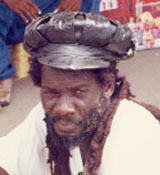 Another observation that comes to mind is the reality that we today buy the photocopies of early primary school books that were developed with quality art and published in colour by Curriculum Development back in the day when artists Tyrone Doris and the late Emerson Samuels worked under the keen eyes of Director Oswald (Shaft) Kendall. When you look at the work produced today the evidence of deterioration in artistic quality and presentation shouts at you, its as if our educators have failed to understand that visuals inspire children to read, for example, the Nelson Readers were out when I attended school but I did bother my attractive older neighbour Sheila Innis for hers since she was out of school, I was enthralled by the paintings and graphics. Visuals later encouraged us to read Uncle Joe on his farm with Master Willy the pig and Percy the chick.
Another observation that comes to mind is the reality that we today buy the photocopies of early primary school books that were developed with quality art and published in colour by Curriculum Development back in the day when artists Tyrone Doris and the late Emerson Samuels worked under the keen eyes of Director Oswald (Shaft) Kendall. When you look at the work produced today the evidence of deterioration in artistic quality and presentation shouts at you, its as if our educators have failed to understand that visuals inspire children to read, for example, the Nelson Readers were out when I attended school but I did bother my attractive older neighbour Sheila Innis for hers since she was out of school, I was enthralled by the paintings and graphics. Visuals later encouraged us to read Uncle Joe on his farm with Master Willy the pig and Percy the chick.
During the early P – I (1966-86)] years, ideological constraints affected the Arts, I was told by a Minister that my work did not reflect the national message, but there were always professionals one could reach out to, like Olga Britton, Denis Williams, Frank Campbell, ‘Chic’ Chichester and others who would brush aside the ideologues and allow the spirit of artistic expression to flow, unfortunately there are no such persons today.
In this dispensation, a concoction of political mediocrity, racism and spite have impacted negatively on the Arts, it has forced our best people to flee this country, today the Crea-tive Arts Association has ceased to function as more than 80% of its talents now reside overseas, because the people who now preside over the official offices of the Arts are not themselves artists/es they cannot tap into the reservoir of relevant artists abroad or at home, they reluctantly seek the advice of creative people at home, most times preferring condescending imposters, who are more scribes, promoters etc. to perform guiding tasks. In the current debate of the day; here I have given you an absolute example of the implementation and dire effects of functional marginalization.
